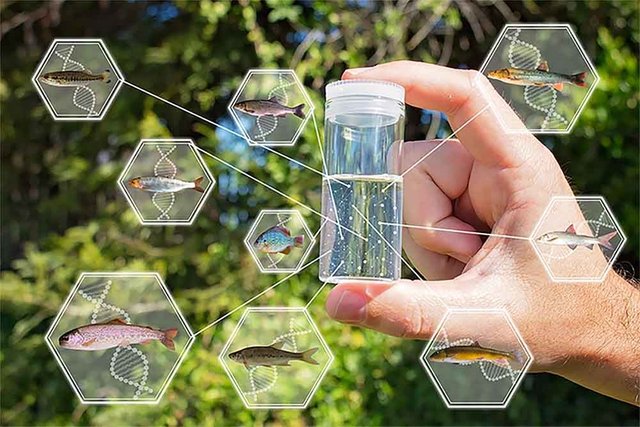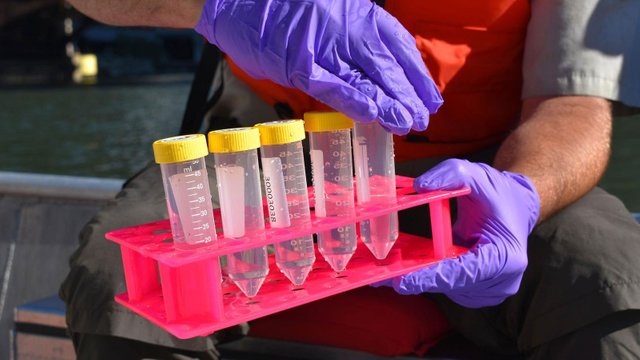Environmental DNA to catalog new animal species/ADN ambiental para catalogar nuevas especies animales

Source
Lately some voices have been heard crying out for a sixth mass extinction because of the human being, of course, but it is difficult to talk about species that disappear when, according to experts, we only know a quarter of the animal species that populate our planet and not Reliable conclusions can be drawn with such a lack of data.
Ultimamente se oyen algunas voces que claman por una sexta extinción masiva por culpa, como no, del ser humano pero es difícil hablar de especies que desaparecen cuando, según los expertos solo conocemos la cuarta parte de las especies animales que pueblan nuestro planeta y no se pueden sacar conclusiones fiables con una carencia tal de datos.
And it is more difficult when it comes to species of small size and as varied as insects, of which, according to experts, only one million of the 5.5 million species that are speculated to exist have been identified, and it is not enough with taking a photo of them, it is necessary to capture one in order to analyze their DNA.
Y es más difícil cuando se trata de especies de pequeño tamaño y tan variados como los insectos de los que, según los entendidos, solo se han identificado un millón de las 5,5 millones de especies que se especula que existen, además no es suficiente con hacerles una foto sino que es necesario capturar uno para poder analizar su ADN.

Source
To accelerate this identification of new species, scientists have recently developed a technique to identify species by extracting DNA from the air that surrounds us and trying to sequence the genetic makeup of cells left in the environment by the species to be identified, which seems to be especially useful for the identification of insects.
Para acelerar esta identificación de nuevas especies los científicos han desarrollado recientemente una técnica para identificar especies extrayendo ADN del aire que nos rodea e intentar secuenciar la dotación genética de las células dejadas en el ambiente por las especies a identificar que parece ser que resulta especialmente útil para la identificación de insectos.
For this, DNA samples were collected from the air using what is called a cyclonic separator, a device that rotates the air inside a tube filled with liquid, thus trapping the DNA fragments transported by the air that will later be amplified and sequenced by scientists in the laboratory.
Para ello se recolectaron muestras del ADN del aire utilizando lo que se llama un separador ciclónico, un artilugio que hace girar el aire dentro de un tubo lleno de líquido atrapando de esta manera los fragmentos de ADN transportados por el aire que posteriormente serán amplificados y secuenciados por los científicos en el laboratorio.

Source
For the first test, air samples were collected in three places in southern Sweden and once the DNA samples were extracted from the air and analyzed in the laboratory, traces of eighty-five different species were found, especially insects, but several species of frogs, birds and other vertebrates were also found.
Para la primera prueba se recolectaron muestras de aire en tres lugares del sur de Suecia y una vez extraídas las muestras de ADN del aire y analizadas en el laboratorio se encontraron rastros de ochenta y cinco especies diferentes sobre todo de insectos pero también se hallaron varias especies de ranas, aves y otros vertebrados.
Obviously all of them were already known species but as a sample and to be in Sweden it is not bad, I suppose that if that same experiment is done in the Amazon rainforest or in some other jungle of Southeast Asia, many more species per square meter will be found and some of they will be unknown to science.
Obviamente todas ellas eran especies ya conocidas pero como muestra y para ser en Suecia no está mal, supongo que si ese mismo experimento se hace en la selva amazónica o en alguna otra selva del sudeste asiático se encontrarán muchas más especies por metro cuadrado y alguna de ellas será desconocida para la ciencia.
More information/Más información
https://www.biorxiv.org/content/10.1101/2021.07.26.453860v1
Hola @mauromar, verdad. Si hacen esa prueba en una selva quizás hasta encuentren alguna especie considerada extinta.

Cyclonic separator sounds interesting,let's see what it can find out of the air.
Unfortunately we know more about other planets than ours, science should focus more not only on studying the planet, also its fauna and flora so that in this way we can create awareness in people of the damage that is being caused to them and the devastating consequences. This technique of collecting DNA from the air is interesting and innovative, this technique will not only help to control the populations of living beings, but also to monitor pathogens such as covid.
I like your topics.
It is unfortunate with regard to extinction of new animal species due to man, sadly this has no turning back Scientists fall short in terms of reports regarding extinct species due to the great variety,but the facts are obvious.
Thank you so much for sharing this information with all of us.
Your work is the result of your hard work. Your every post is commendable